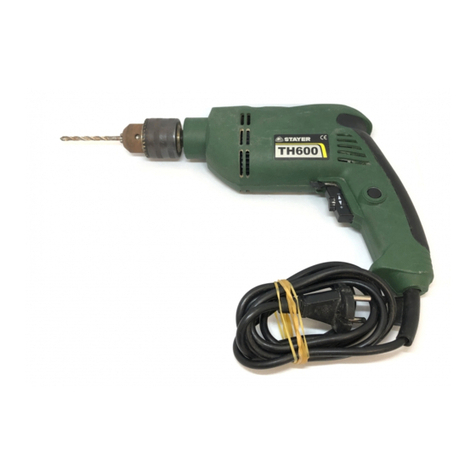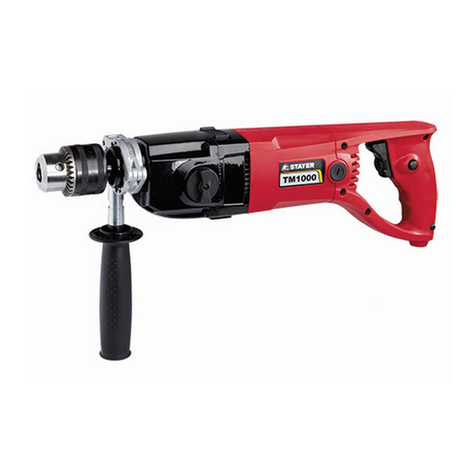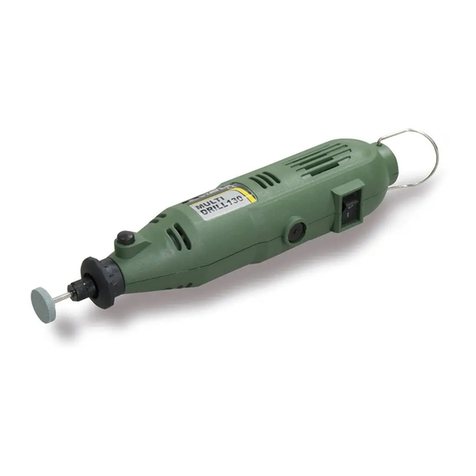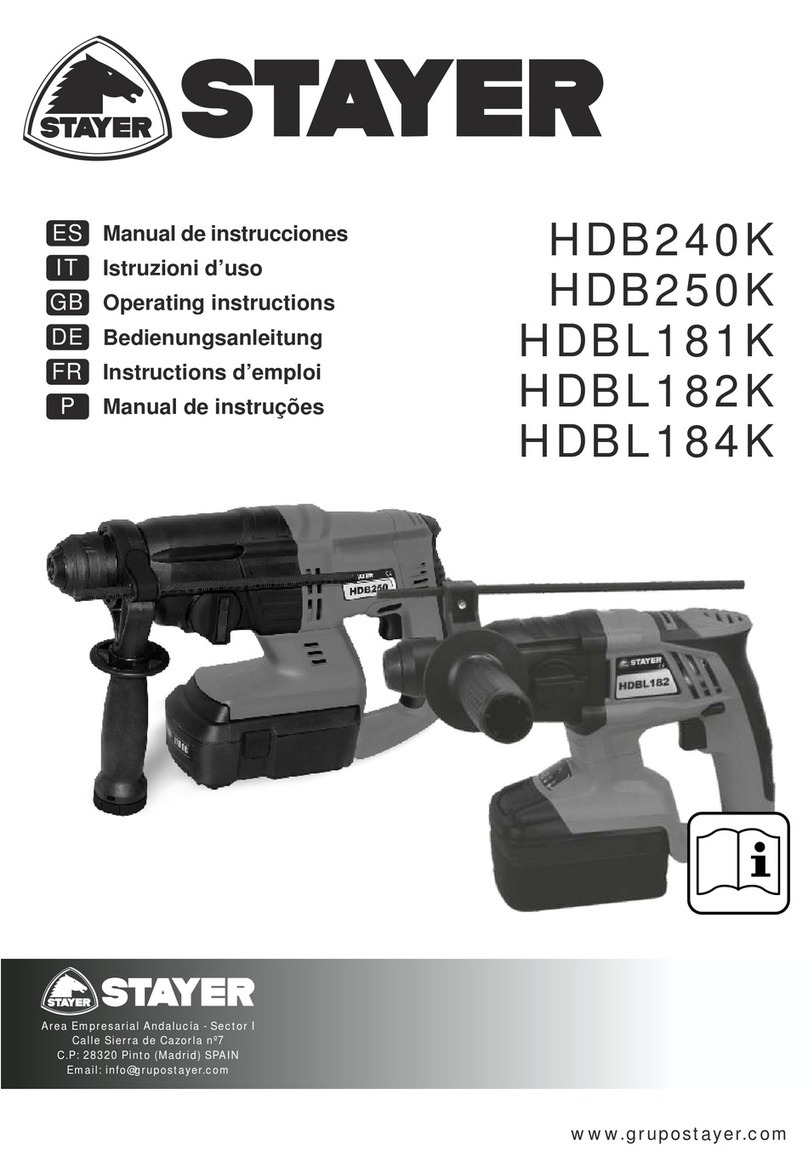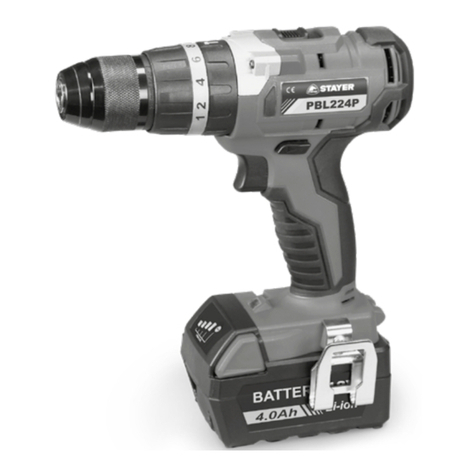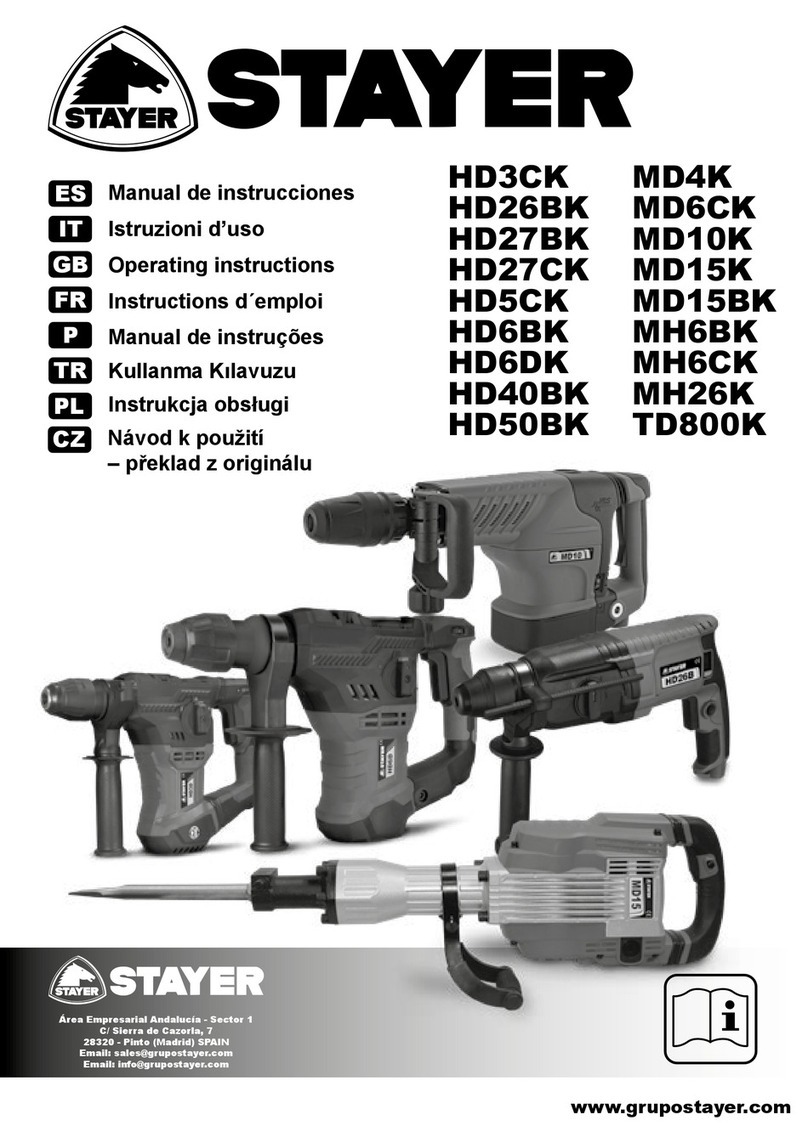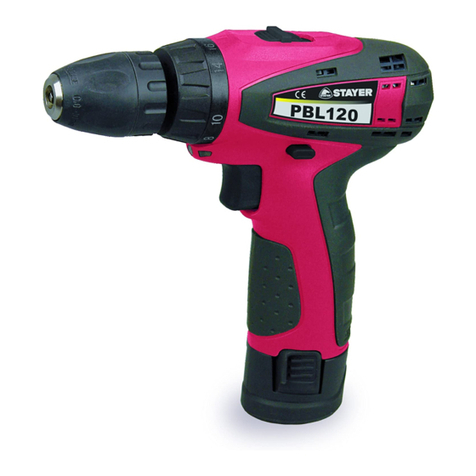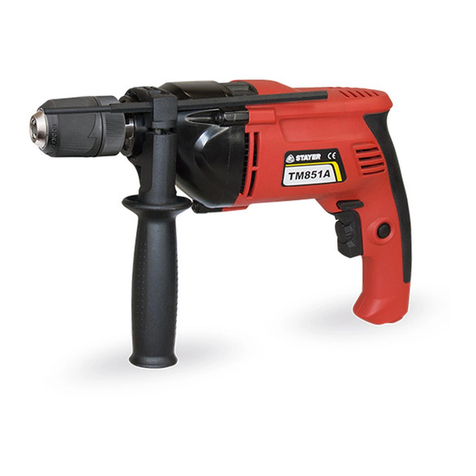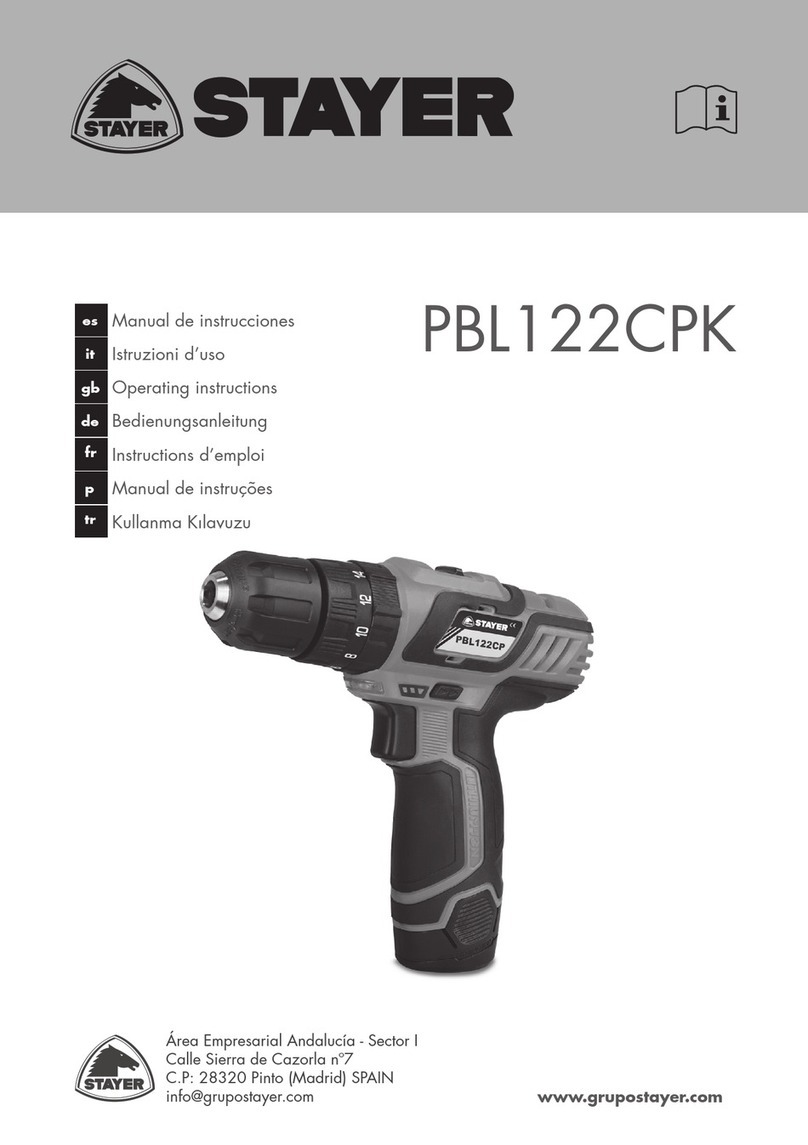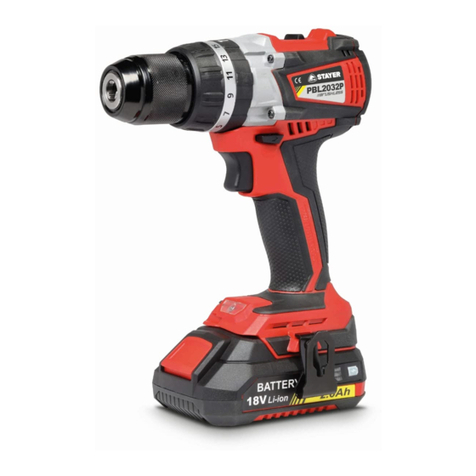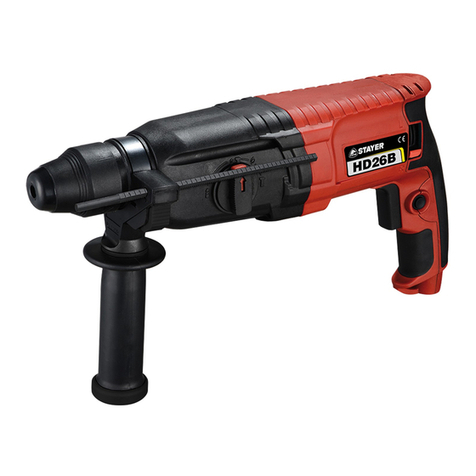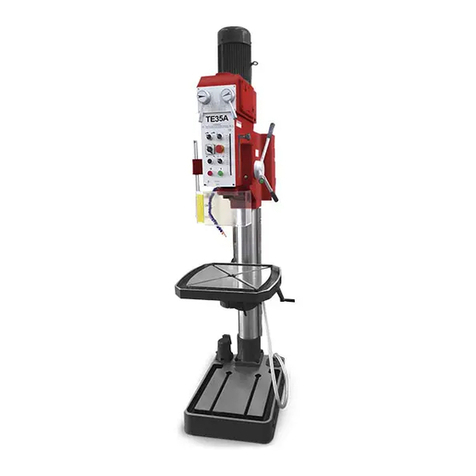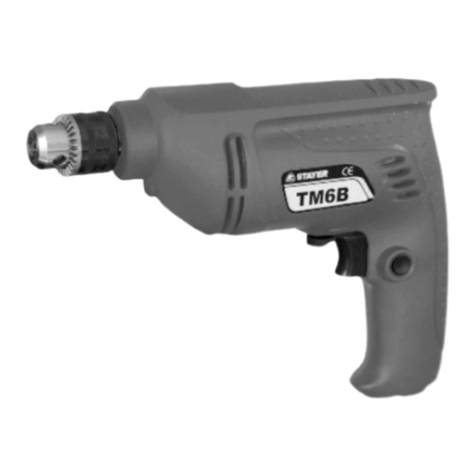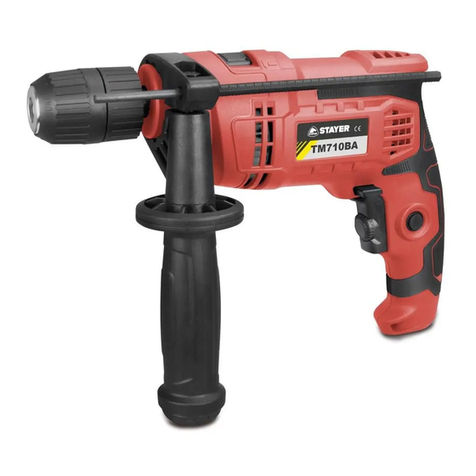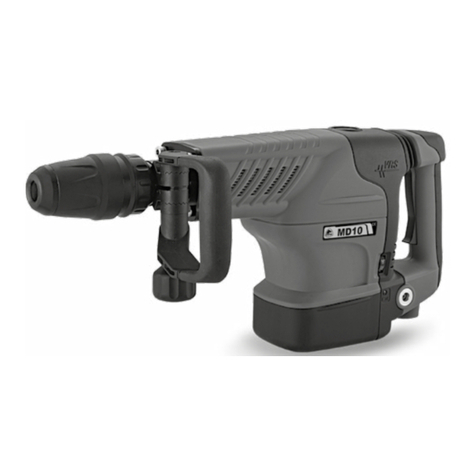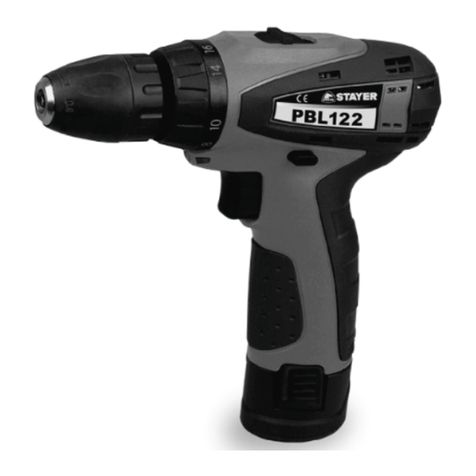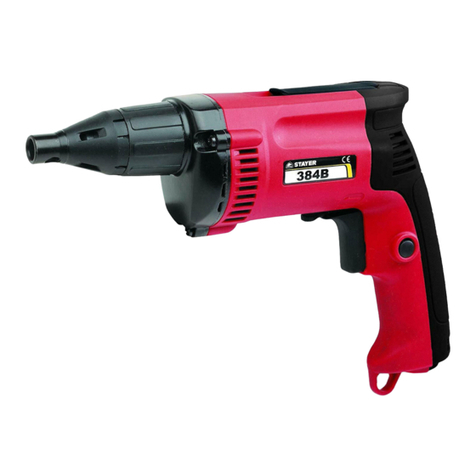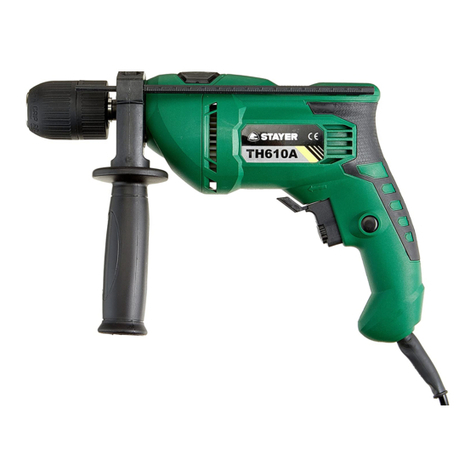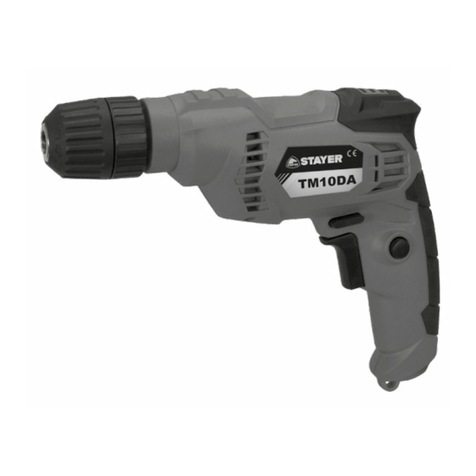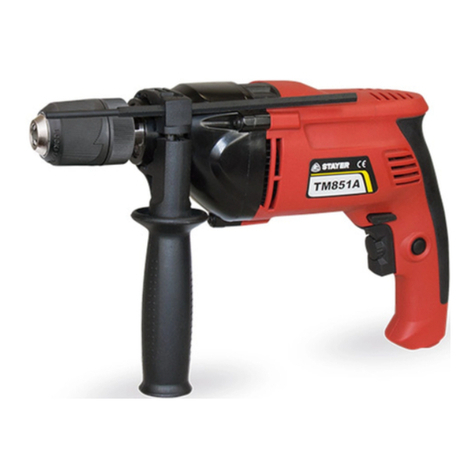
Non lavorare mai materiali contenenti amianto.
L’amianto è ritenuto materiale cancerogeno.
Prendere dei provvedimenti appropriati in caso che
durante il la voro dovessero svilupparsi polveri
dannose per la salute, infiammabili oppure esplosive.
Ad esempio: Alcune polveri sono considerate
cancerogene. Portare una maschera di protezione contro la
polvere ed utilizzare, se collegabile, un sistema
diaspirazione polvere/aspirazione trucioli.
Mantenere pulita la propria zona di lavoro. Miscele di
materiali di diverso tipo possono risultare particolarmente
pericolose. La polvere di metalli leggeri può essere
infiammabile ed esplosiva.
Prima di posare l’elettroutensile, attendere sempre fino
a quando si sarà fermato completamente. L’accessorio
può incepparsi e comportare la perdita di controllo
dell’elettroutensile.
Mai utilizzare l’elettroutensile con un cavo
danneggiato. Non toccare il cavo danneggiato ed
estrarre la spina di rete in caso che si dovesse
danneggiare il cavo mentre si lavora. Cavi danneggiati
aumentano il rischio diuna scossa di corrente elettrica.
“Avvertimento - Per ridurre il rischio di lesioni
leggete le istruzioni per lʼuso”
Portate cuffie antirumore.
Lʼeffetto del rumore può causare la perdita
dellʼudito.
Mettete una maschera antipolvere.
Facendo lavori su legno o altri materiali si può
creare della polvere nociva alla salute. Non lavorate
materiale contenente amianto!
Indossate gli occhiali protettivi.
Scintille createsi durante il lavoro o schegge, trucioli
e polveri scaraventate fuori dallʼapparecchio
possono causare la perdita della vista.
3. Istruzioni di uso
3.1 Strumento di posizionamento
Leggere tutte le avvertenze di pericolo e le
istruzioni operative. In caso di mancato rispetto
delle avvertenze di pericolo e delle istruzioni
operative si potrà creare il pericolo di scosse
elettriche, incendi e/o incidenti gravi.
Lʼapparecchio deve venire usato solamente per lo scopo a
cui è destinato.
Ogni altro tipo di uso che esuli da quello previsto non è un
uso conforme.
Lʼutilizzatore/lʼoperatore, e non il costruttore, è
responsabile dei danni e delle lesioni di ogni tipo che ne
risultino.
Questo manuale è coerente con la data di fabbricazione
del vostro computer, potrete trovare informazioni sui dati
tecnici della macchina acquistata controllo manuale degli
aggiornamenti delle nostre macchine sul sito:
www.grupostayer.com
Il trapano è concepito per eseguire fori in legno, acciaio,
metalli non ferrosi e pietra utilizzando il relativo strumento
di perforazione.
1. Indice
pagina
2.Istruzioni specifiche di sicurezza................................5
3.Istruzioni di uso............................................................5
3.1 Strumento di posizionamento........................................5
3.2 Montaggio.......................................................................6
3.3 Accensione elettrica...............................................6
3.4 Descrizione Ilustrada..............................................6
4.Istruzioni di funzionamento........................................6
4.1 Il posizionamento e test...........................................6
4.2 Cambio utensile......................................................7
5.Istruzioni di Manutenzione ed assistenza..................7
5.1 Pulizia.....................................................................7
5.2 Servizio di riparazione.............................................7
5.3 Garanzia.................................................................8
5.4 Smaltimento e riciclaggio........................................8
6.Normative.....................................................................8
6.1 Dati tecnici..............................................................8
6.2 Dichiarazione di conformità CE...............................8
2. Istruzioni specifiche di sicurezza
Portare cuffie di protezione. L’effetto del rumore può
provocare la perdita dell’udito.
Utilizzare le impugnature supplementari fornite
insieme all’elettroutensile. La perdita di controllo
sull’elettroutensile può comportare il peric olo di incidenti.
Al fine di rilevare linee di alimentazione nascoste,
utilizzare adatte apparecchiature di ricerca oppure
rivolgersi alla locale società erogatrice. Un contatto con
linee elettriche può provocare lo sviluppo di incendi e di
scosse elettriche. Danneggiando linee del gas si può
creare il pericolo di esplosioni.
Penetrando una tubazione dell’acqua si provocano seri
danni materiali oppure vi è il pericolo di provocare una
scossa elettrica.
Quando si eseguono lavori in cui vi è pericolo che
l’accessorio impiegato possa arrivare a toccare cavi
elettrici nascosti oppure anche il cavo elettrico della
macchina stessa, tenere l’elettroutensile afferrandolo
sempre alle superfici di impugnatura isolate.
Un contatto con un cavo elettrico mette sotto tensione
anche le parti in metallo dell’elettroutensile e provoca
quindi una scossa elettrica.
Durante le operazioni di lavoro è necessario tenere
l’elettroutensile sempre con entrambe le mani ed
adottare una posizione di lavoro sicura. Utilizzare con
sicurezza l’elettroutensile tenendolo sempre con entrambe
le mani.
Assicurare il pezzo in lavorazione. Un pezzo in
lavorazione può essere bloccato con sicurezza in posizione
solo utilizzando un apposito dispositivo di serraggio oppure
una morsa a vite e non tenendolo con la semplice mano.
ITALIANO
5
5
